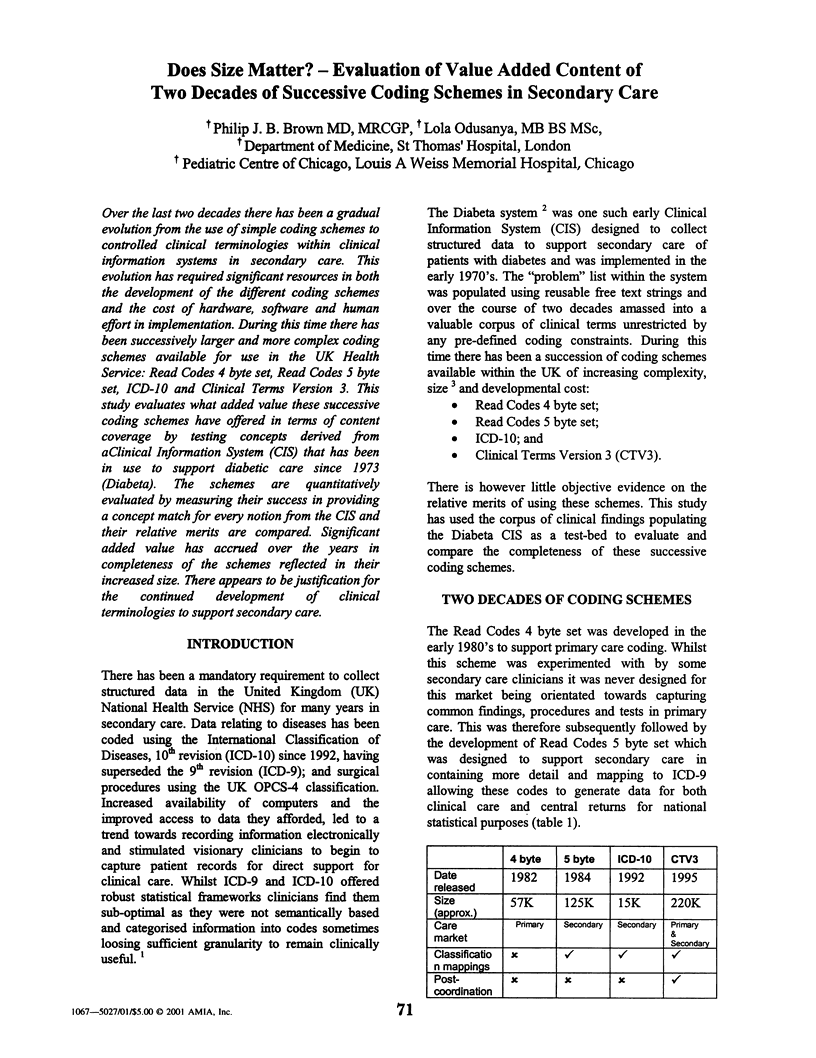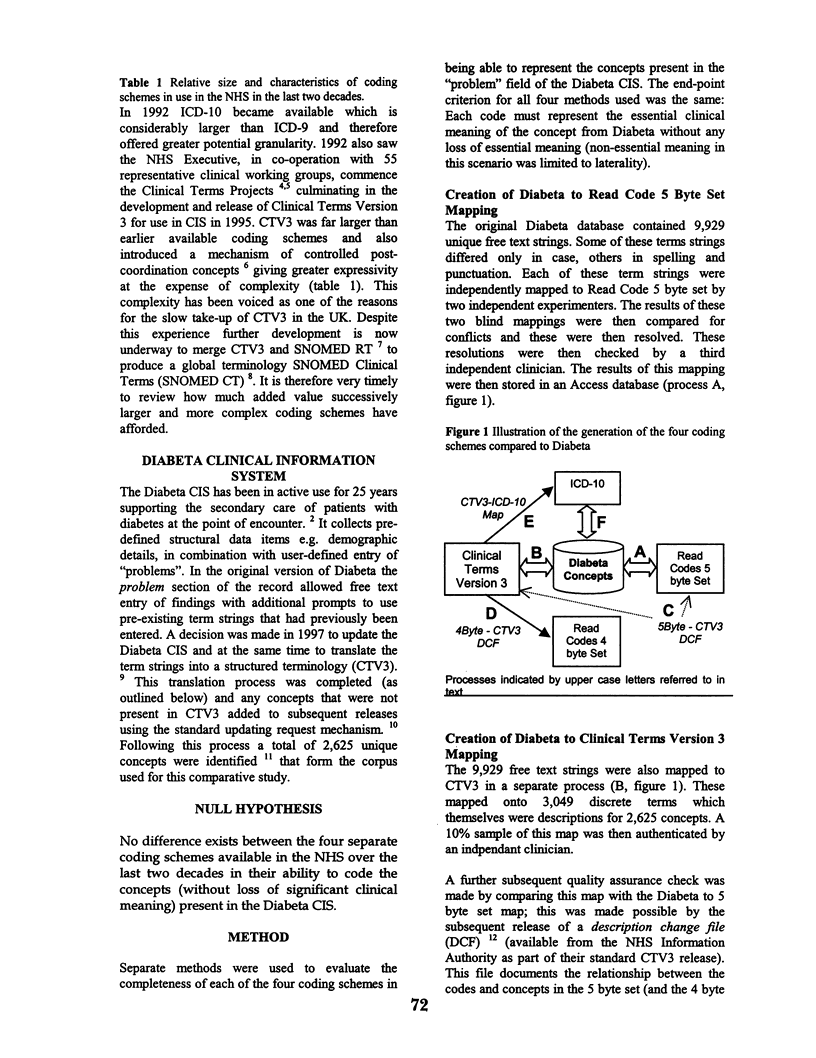Abstract
Over the last two decades there has been a gradual evolution from the use of simple coding schemes to controlled clinical terminologies within clinical information systems in secondary care. This evolution has required significant resources in both the development of the different coding schemes and the cost of hardware, software and human effort in implementation. During this time there has been successively larger and more complex coding schemes available for use in the UK Health Service: Read Codes 4 byte set, Read Codes 5 byte set, ICD-10 and Clinical Terms Version 3. This study evaluates what added value these successive coding schemes have offered in terms of content coverage by testing concepts derived from aClinical Information System (CIS) that has been in use to support diabetic care since 1973 (Diabeta). The schemes are quantitatively evaluated by measuring their success in providing a concept match for every notion from the CIS and their relative merits are compared. Significant added value has accrued over the years in completeness of the schemes reflected in their increased size. There appears to be justification for the continued development of clinical terminologies to support secondary care.
Full text
PDF




Selected References
These references are in PubMed. This may not be the complete list of references from this article.
- Campbell J. R., Carpenter P., Sneiderman C., Cohn S., Chute C. G., Warren J. Phase II evaluation of clinical coding schemes: completeness, taxonomy, mapping, definitions, and clarity. CPRI Work Group on Codes and Structures. J Am Med Inform Assoc. 1997 May-Jun;4(3):238–251. doi: 10.1136/jamia.1997.0040238. [DOI] [PMC free article] [PubMed] [Google Scholar]
- Chute C. G., Cohn S. P., Campbell K. E., Oliver D. E., Campbell J. R. The content coverage of clinical classifications. For The Computer-Based Patient Record Institute's Work Group on Codes & Structures. J Am Med Inform Assoc. 1996 May-Jun;3(3):224–233. doi: 10.1136/jamia.1996.96310636. [DOI] [PMC free article] [PubMed] [Google Scholar]
- Humphreys B. L., McCray A. T., Cheh M. L. Evaluating the coverage of controlled health data terminologies: report on the results of the NLM/AHCPR large scale vocabulary test. J Am Med Inform Assoc. 1997 Nov-Dec;4(6):484–500. doi: 10.1136/jamia.1997.0040484. [DOI] [PMC free article] [PubMed] [Google Scholar]
- O'Neil M., Payne C., Read J. Read Codes Version 3: a user led terminology. Methods Inf Med. 1995 Mar;34(1-2):187–192. [PubMed] [Google Scholar]
- Robinson D., Schulz E., Brown P., Price C. Updating the Read Codes: user-interactive maintenance of a dynamic clinical vocabulary. J Am Med Inform Assoc. 1997 Nov-Dec;4(6):465–472. doi: 10.1136/jamia.1997.0040465. [DOI] [PMC free article] [PubMed] [Google Scholar]
- Spackman K. A., Campbell K. E., Côté R. A. SNOMED RT: a reference terminology for health care. Proc AMIA Annu Fall Symp. 1997:640–644. [PMC free article] [PubMed] [Google Scholar]
- Sönksen P., Williams C. Information technology in diabetes care 'Diabeta': 23 years of development and use of a computer-based record for diabetes care. Int J Biomed Comput. 1996 Jul;42(1-2):67–77. doi: 10.1016/0020-7101(96)81526-1. [DOI] [PubMed] [Google Scholar]


